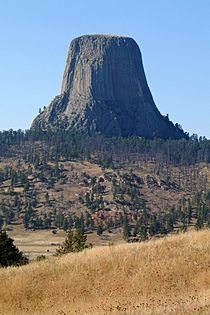Antiquities Act facts for kids
 |
|
| Long title | An act for the preservation of American antiquities. |
|---|---|
| Enacted by | the 59th United States Congress |
| Effective | June 8, 1906 |
| Citations | |
| Public law | Pub.L. 59-209 |
| Statutes at Large | 34 Stat. 225 |
| Codification | |
| U.S.C. sections created |
|
| Legislative history | |
|
|
| United States Supreme Court cases | |

The Antiquities Act of 1906 is an important law in the United States. It was signed into law by President Theodore Roosevelt on June 8, 1906. This law gives the President the power to create national monuments. These monuments protect special natural, cultural, or scientific places on federal lands (land owned by the U.S. government). The Act has been used over 100 times since it was created.
History of the Antiquities Act
The Antiquities Act became law during President Theodore Roosevelt's time in office. People were worried about protecting old Native American ruins and artifacts in the western United States. These items are often called "antiquities." Places like Chaco Canyon, New Mexico, had many such sites.
By the late 1800s, private collectors were taking artifacts from these lands. These people were sometimes called "pot hunters." In 1902, Iowa Congressman John F. Lacey traveled to the Southwest. He went with Edgar Lee Hewett, a rising anthropologist. They wanted to see how much damage the pot hunters had caused.
Hewett wrote a detailed report for Congress about the area's archaeological treasures. This report, along with Lacey's findings, helped push the law forward. It showed how important it was to protect these sites.
Since the Act passed, almost every president has used it. They have either made new national monuments or made existing ones bigger. President Obama created more monuments than any president before him, with 26. President Theodore Roosevelt held the previous record with 18 monuments.
On April 26, 2017, President Donald Trump asked for a review of the law. This review looked at how the law was being used.
How the Act Is Used
The main goal of the Antiquities Act is to let the President protect important public natural areas. These areas are then called "National Monuments." The Act also lets the President accept private lands for this purpose. It aims to protect all historic and prehistoric sites on U.S. federal lands. It also stops people from digging up or destroying these old items without permission.
Using this Act is much faster than going through Congress to create a National Park. The law says that monuments should be the "smallest area compatible" with protecting the special objects. This means the protected area should be just big enough to do its job.
The U.S. Supreme Court has always supported the President's power under this Act. They have ruled that the President has a lot of freedom in deciding what to protect and how big the area should be.
Some national monuments have later become national parks. Others have been added to existing national parks.
The first time the Act was used was to protect a huge rock formation. President Theodore Roosevelt declared Devils Tower National Monument on September 24, 1906. He also used it to create the Grand Canyon National Monument. This area is now Grand Canyon National Park.
The largest protected area created by the Act is Papahānaumokuākea Marine National Monument. It covers about 583,000 square miles (1,510,000 square kilometers). President George W. Bush created this monument on June 15, 2006.
The smallest monument was Father Millet Cross National Monument. It was only about 0.0074 acres (30 square meters). It is now part of a state park.
If someone wants to dig for artifacts on these lands, they need a special permit. This "Antiquities Permit" must come from the government department that manages the land.
Changes to Presidential Powers
The President's powers under the Act have been limited twice. The first time was after Jackson Hole National Monument was created in 1943. This was a bit controversial. A law in 1950 added Jackson Hole to Grand Teton National Park. It also changed the Antiquities Act. Now, any new or larger monuments in Wyoming need Congress's approval.
The second change happened after President Jimmy Carter used the Act in Alaska. He created 56 million acres (227,000 square kilometers) of national monuments there. The Alaska National Interest Lands Conservation Act now requires Congress to agree if the Act is used in Alaska for areas larger than 5,000 acres (20 square kilometers).
In 2017, the Trump administration reviewed 27 major monument designations. President Trump then made Grand Staircase–Escalante National Monument and Bears Ears National Monument in Utah much smaller. The courts are still deciding if these actions were legal. In 2021, President Biden restored these monuments to their original sizes. While some presidents have tried to change monuments, no president has ever completely removed a monument created by a previous president.
Several Supreme Court cases have confirmed that the president can declare large areas as monuments using this Act.
See also
 In Spanish: Ley de Antigüedades (Estados Unidos) para niños
In Spanish: Ley de Antigüedades (Estados Unidos) para niños

